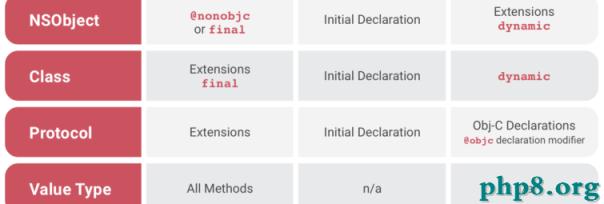iOS 橫豎屏的切換以及一般界面橫屏
編輯:IOS開發綜合
進入注釋前先看法幾個概念
portrait 豎屏(Home鍵在下邊)
upside down 豎屏(Home鍵在上邊)
landscape 橫屏 |landscape left 橫屏Home鍵在右邊
|landscape right 橫屏Home鍵在左邊
1、先讓窗口支持橫豎屏
兩種辦法可以修正窗口對橫豎屏的支持
一種,代碼控制
在appDelegate中重寫辦法,比方
- (UIInterfaceOrientationMask)application:(UIApplication *)application supportedInterfaceOrientationsForWindow:(UIWindow *)Window {
if (self.isShouAutoRotate) {
return UIInterfaceOrientationMaskAll;
}
return UIInterfaceOrientationMaskPortrait;
}
另一種就是,在【General】-->【Device Orientation】中設置好支持的方向
如圖,,,,,,
兩種辦法的利害,讀者自己琢磨。
2、上面看法三個辦法
// 能否自動旋轉
- (BOOL)shouldAutorotate {
return YES;
}
// 前往支持的方向
- (UIInterfaceOrientationMask)supportedInterfaceOrientations {
return UIInterfaceOrientationMaskLandscapeRight;
}
// 切換橫豎屏時,可以重寫這個辦法,來重新規劃界面
- (void)willRotateToInterfaceOrientation:(UIInterfaceOrientation)toInterfaceOrientation duration:(NSTimeInterval)duration {}
3、一般界面橫屏
第一種處置方式: 1中對應的設置支持橫屏完成後,在相應的控制器直接完成2中的辦法二
第二種處置方式: 1中對應的設置支持橫屏完成後,在相應控制器的viewDidLoad辦法中強迫設置設備朝向,代碼如下:
NSNumber *value = [NSNumber numberWithInt:4];
[[UIDevice currentDevice] setValue:value forKey:@"orientation"];
看完是不是很想吐槽,來吧,評論等著你
【iOS 橫豎屏的切換以及一般界面橫屏】的相關資料介紹到這裡,希望對您有所幫助! 提示:不會對讀者因本文所帶來的任何損失負責。如果您支持就請把本站添加至收藏夾哦!
- 上一頁:iOS開發 常用宏定義
- 下一頁:iOS 推送服務
相關文章
+



